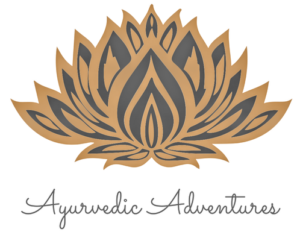Finding the Right Herb Shop
There are tons of herb shops in India, but the trick is to know which ones will sell you the best medicine and how to find them in a country that often relies on landmarks more than physical addresses for location.

After I left Kerala, I didn’t want to carry a bunch of bottles of liquid around with me while traveling around north India, so I decided to buy the herbs once back in Mumbai. I had Googled a couple of places that advertised herbs, but I was disappointed to find the three shops I visited did not offer the ones my doctor had prescribed. “Those are South Indian,” the shop keeps told me.
Frustrated, I decided to try again in Delhi, but this time I had a cheat sheet a friend had given me with a list of Arya Vaidya Sala locations, although many of the places listed were far from my Karol Bagh hotel. I took a chance searching on Google maps, and I ended up finding an Arya Vaidya Sala (AVS) herb shop very close to my hotel that was not on the list but had everything I needed.
Now, you may have read me griping about Arya Vaidya Sala when I traveled to the Pancha Karma center in Kottakal for a treatment, but their herbs are very high quality and trustworthy. Arya Vaidya Sala runs an efficient, highly streamlined business in India, and in the case of getting quality herbs, they are the only outlet I know well enough to trust, although that is not to say there are other high quality herbs out there.
You can find these herb shops in every major city and even in some small villages, especially in Kerala, and since I’ve returned home, I’ve discovered a list of distributors on the Arya Vaidya Sala Kottakal website. This list would have been helpful while I was trudging around north Mumbai neighborhoods, completely lost with my Google maps telling me I was standing on top of a shop that was actually three blocks away, but at least I can share these tips with you now. (Note: don’t be afraid to ask for directions if you get lost—India is still very much a work in progress as far as accurate mapping.)
My list is somewhat different from the list of distributors on the AVS website, and I’m not sure why that is but I can vouch for The Arya Vaidya Pharmacy in Karol Bagh (see shop under New Delhi below). Everything else on this list is an unknown, so be sure to give them a call first for best results.
Kozhikode (Calicut)
Kallai Road 673 002; (tel) 0495 2302666
Mananchira Square 673 001; (tel) 0495 2720664
Mumbai (Bombay)
Tamil Sangham Road, Sion East 400 002; (tel) 022 24016879
Kerala House, Vashi, Navi Mumbai 400 703; (tel) 022 27814542
New Delhi
E-76, South Extension, Part l, 110 049; (tel) 011 24621790
The Arya Vaidya Pharmacy,
Thiruvananthapuram (Trivandrum)
Statue Junction 695 001; (tel) 0471 2463249
Packing Your Herbs for Plane Travel
You cannot ship liquid herbs back from India, but you can fly with them in your checked bags. I packed up about $25 dollars worth of herbs next to about $500 in clothing and fabrics in my big suitcase and hoped for the best, but I took extra precautions to make sure the liquids were double sealed in plastic ziplock bags, then double sealed again in heavy-duty trash bags, and then wrapped up entirely in clear packing tape. While this might sound like a lot of precaution, I was happy I took the time to pack my herbs properly as one of the bottles (these have somewhat flimsy metal tops) leaked on the way home, but it never got out of my sealed bags to ruin my clothes. Indian herbal liquids will ruin your clothing if you get a spill, so be sure to pack carefully.
Buying Indian Herbs outside of India
Once you are back home, there are some options for ordering Ayurvedic herbs online, and Arya Vaidya Pharmacy is leading the way in international distribution as well. A Google search for the formulation will typically yield some good results for me, although I am not able to find the exact formulations (yet) that my doctor in Kerala prescribed. Luckily, she is able to work with me to find good substitutes that are available in the United States, so I recommend following that approach as there are often a variety of formulations available to use as a substitute.
For simple herbs like the Ashwaganda or Triphala I take daily, I love Banyan Botanicals for their powdered herbs (they also sell pills & liquids, but powder is best). However, I have not found an outlet online that delivers the complex Ayurvedic formulations called for by Ayurvedic doctors in India.






 And the maybe-not-so-good:
And the maybe-not-so-good: Lord Dhanvantri might be the deity most frequently associated with Ayurveda, but Lord Ganesh is also said to know the ancient teachings of the practice. One of the most beloved gods in the Hindu religion, he is worshipped during the holiday of Ganesh Chaturthi all over India, but no where as lavishly as in Mumbai.
Lord Dhanvantri might be the deity most frequently associated with Ayurveda, but Lord Ganesh is also said to know the ancient teachings of the practice. One of the most beloved gods in the Hindu religion, he is worshipped during the holiday of Ganesh Chaturthi all over India, but no where as lavishly as in Mumbai.